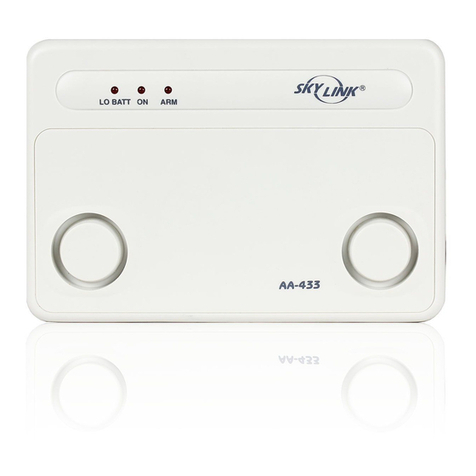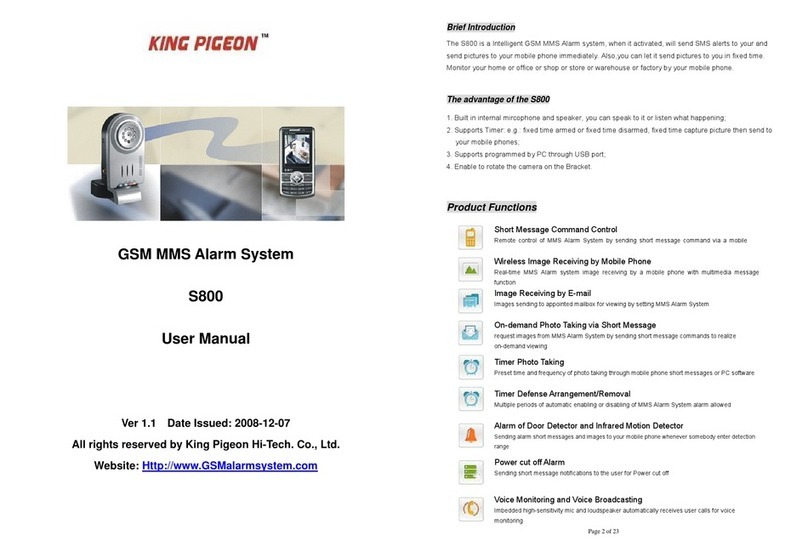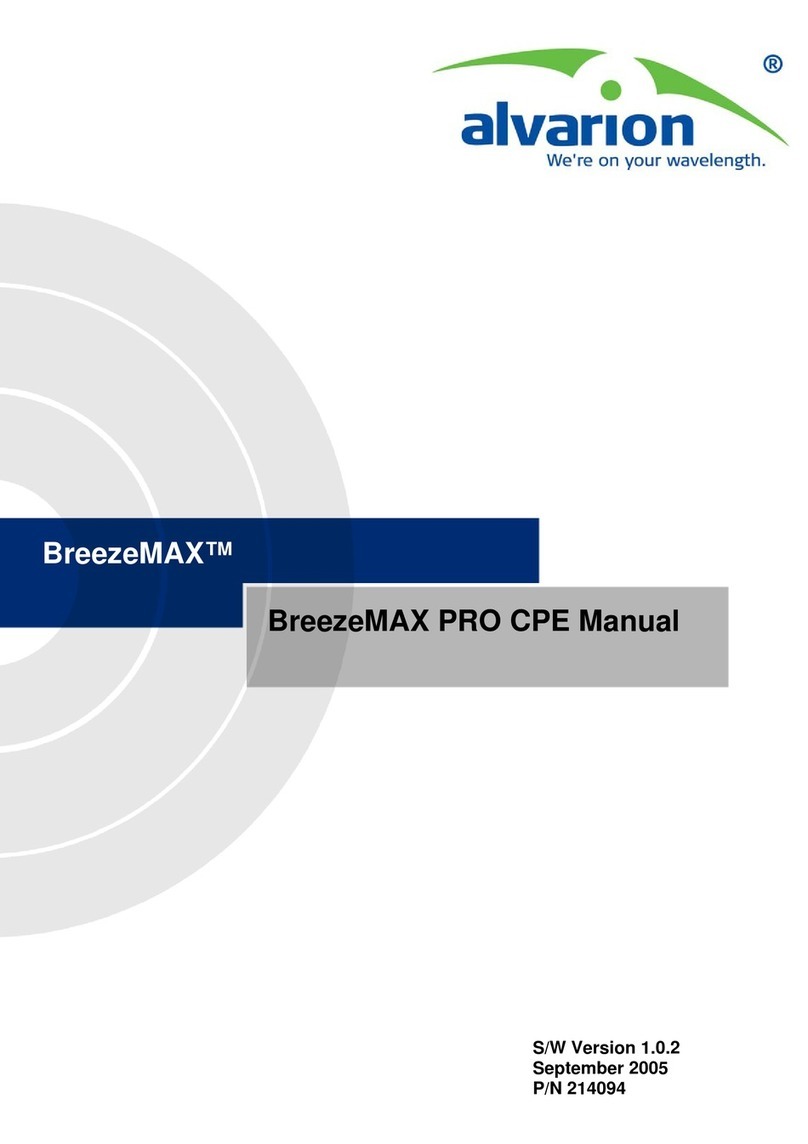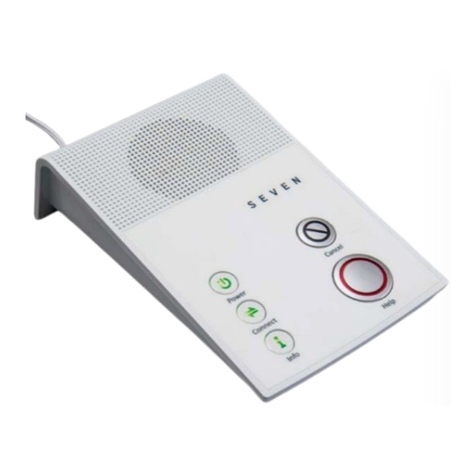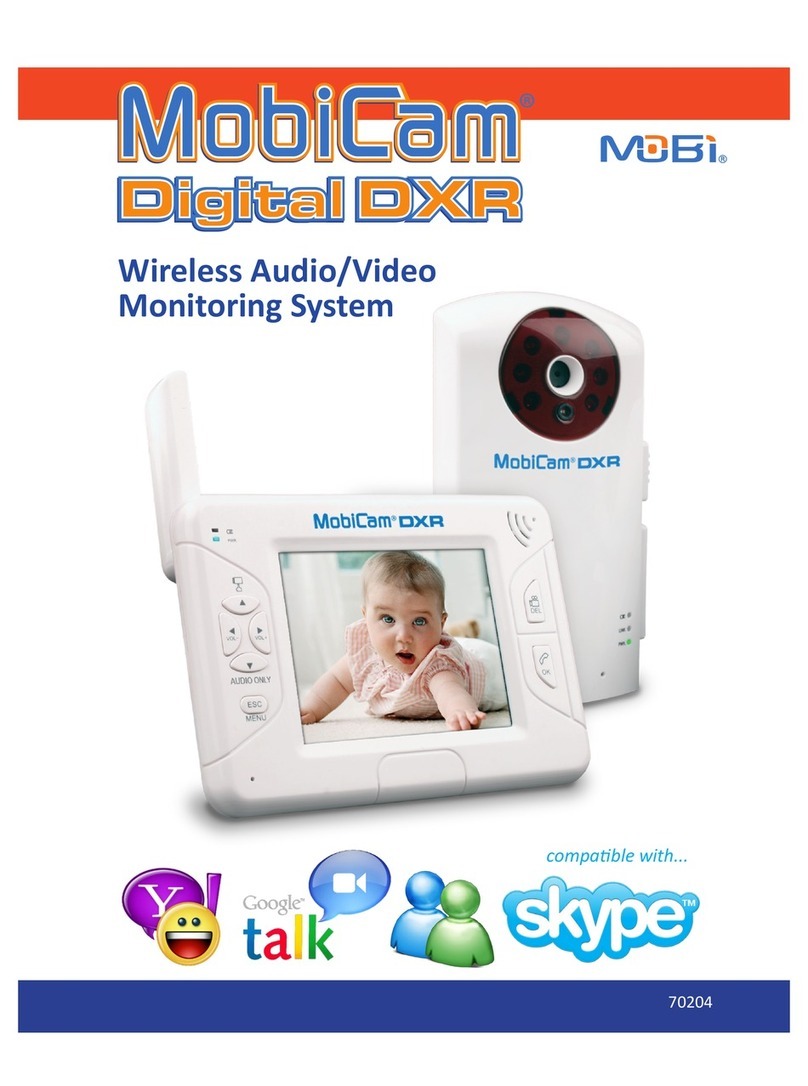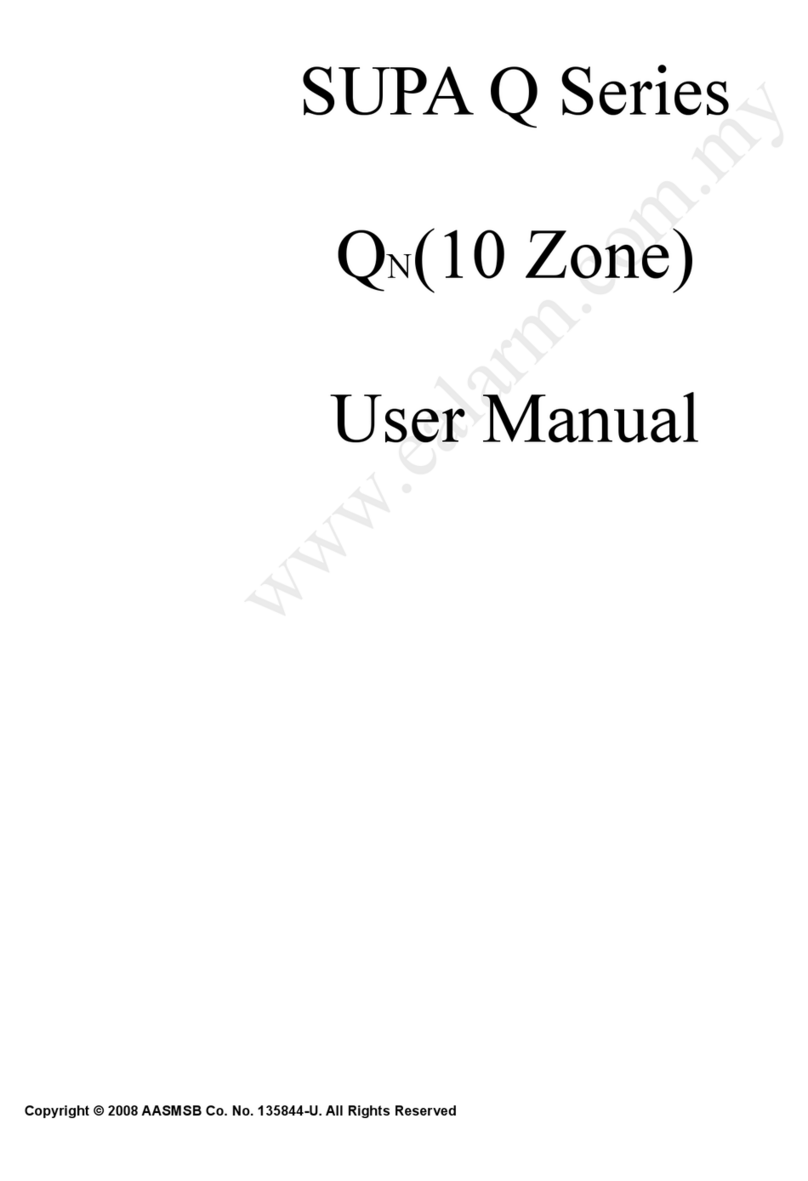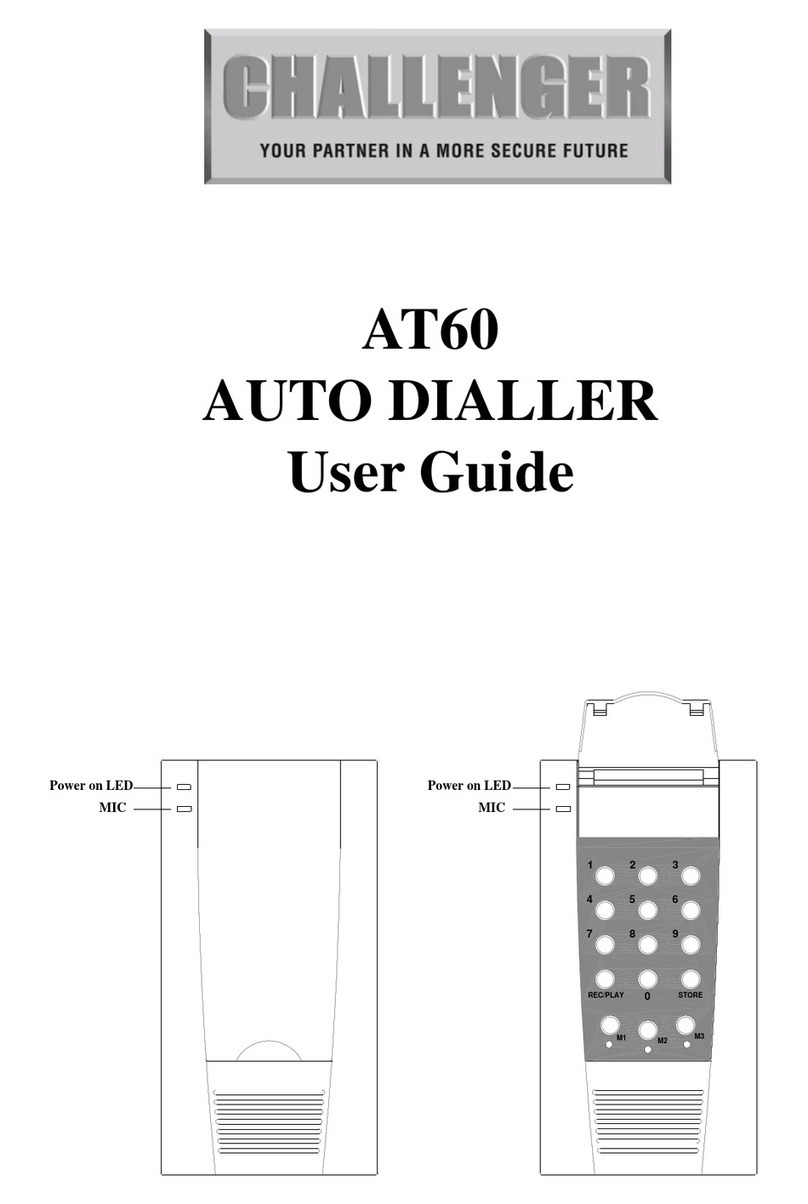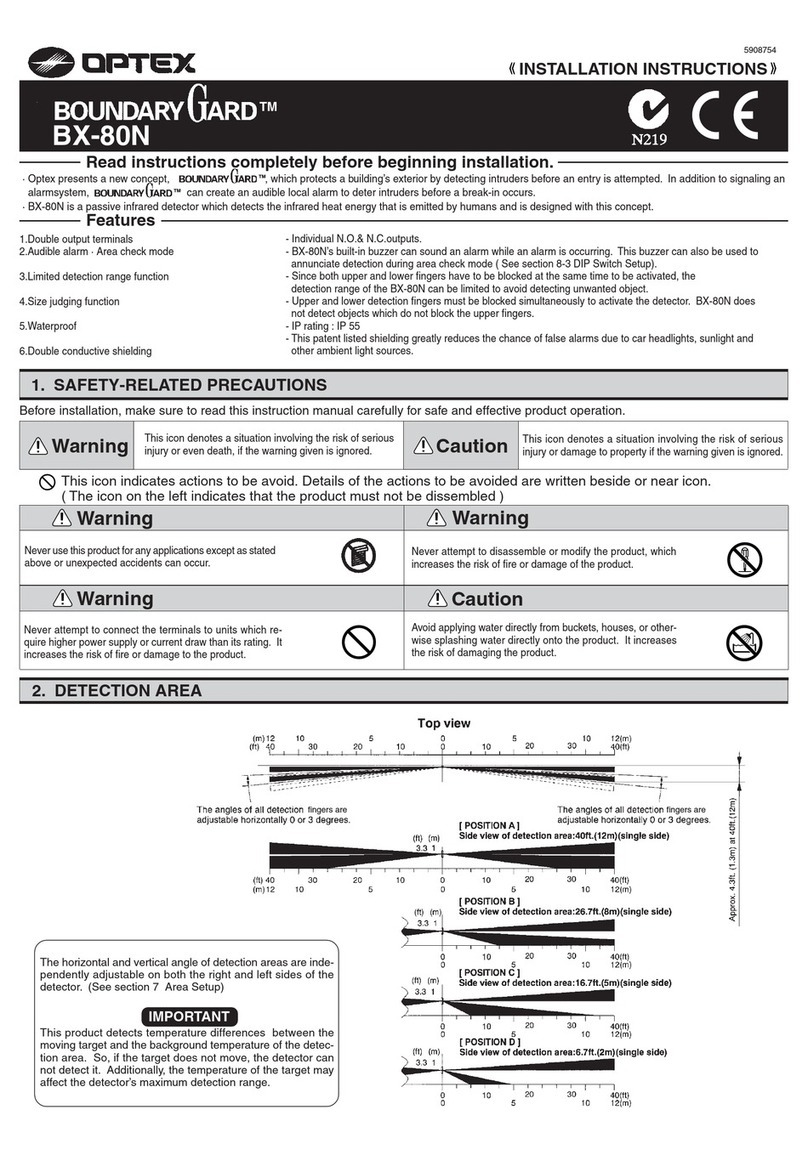UTC Fire and Security interlogix Concord 4 User manual

Concord 4 Installation Manual
P/N 466-2182 • REV J • NOV12

Copyright
© 2012 UTC Fire & Security Americas Corporation, Inc.
Interlogix is part of UTC Climate Controls & Security, a unit of United Technologies
Corporation. All rights reserved.
This document may not be copied in whole or in part or otherwise reproduced without prior
written consent from UTC Fire & Security, Inc., except where specifically permitted under US
and international copyright law.
Disclaimer
The information in this document is subject to change without notice. UTC Fire & Security
assumes no responsibility for inaccuracies or omissions and specifically disclaims any
liabilities, losses, or risks, personal or otherwise, incurred as a consequence, directly or
indirectly, of the use or application of any of the contents of this document. For the latest
documentation, contact your local supplier or visit us online at www.utcfireandsecurity.com.
This publication may contain examples of screen captures and reports used in daily
operations. Examples may include fictitious names of individuals and companies. Any
similarity to names and addresses of actual businesses or persons is entirely coincidental.
Trademarks and
patents
Other trade names used in this document may be trademarks or registered trademarks of the
manufacturers or vendors of the respective products.
Intended use
Use this product only for the purpose it was designed for; refer to the data sheet and user
documentation for details. For the latest product information, contact your local supplier or
visit us online at www.utcfireandsecurity.com.
Contact information
www.utcfireandsecurity.com. or www.interlogix.com
Technical support
www.interlogix.com/customer-support.

Concord 4 Installation Manual i
Content
Important information iii
Chapter 1 Introduction 1
Planning the installation 2
SuperBus 2000 bus devices 3
Chapter 2 Installation 5
Installation overview 6
Mounting the panel 10
Intrusion detection devices 15
Smoke detectors 15
Speakers and sirens 18
SuperBus 2000 touchpads 22
SuperBus 2000 modules 22
Phones 28
Power 30
Chapter 3 Programming 33
Overview 34
Quick programming mode 36
Tier 1 programming menus 37
Tier 2 programming menus 40
Security menu 45
Phones menu 50
Phone options menu 54
Timers menu 57
Light control menu 59
Touchpad options menu 60
Reporting menu 61
Siren options menu 66
Sensors menu 67
Audio verification menu 71
Accessory modules menu 73
Onboard options menu 78
Macro keys menu 81
User programming mode 82
Downloader programming 93
Chapter 4 Testing and troubleshooting 95
Testing the system 96

ii Concord4 Installation Manual
Troubleshooting 106
Appendix A System planning sheets 117
Customer information 118
Wireless devices 118
Hardware devices 119
Zone and sensor assignments 121
System settings index and record 124
Appendix B Reference tables 129
Sensor group characteristics 130
Sensor text 134
System event triggers 136
Sensor group event triggers 137
Sensor number event triggers 138
System feature event triggers 141
Response characteristics 143
Response numbers 143
Specifications 145

Concord 4 Installation Manual iii
Importantinformation
Intended use
Use this product only for the purpose it was designed for; refer to the data sheet
and user documentation for details. For the latest product information, contact
your local supplier or visit us online at www.utcfireandsecurity.com.
Changes or modifications not expressly approved by UTC Fire & Security can
void the user’s authority to operate the equipment.
About this manual
This manual provides information for planning, installing, programming, and
testing this security system. Planning sheets are included for you to record
hardware layout and software programming settings.
Use this manual for the following panels:
600-1021-95R
Concord 4 RF
600-1022-95R
Concord Express V4
600-1040
Concord Commercial V4
600-1042
Concord Hybrid
When necessary, this manual refers you to other documentation with compatible
peripherals.
The Concord 4 User Manual (P/N 466-2183) contains user worksheets that you
should fill out during the installation and programming ofthe system. For
multiple-partition systems, we suggest a user manual for each partition.
Read these instructions and all related documentation entirely before installing or
operating this product.
Note: A qualified service person, complying with all applicable codes, should
perform all required hardware installation.


Concord 4 Installation Manual 1
Chapter 1
Introduction
Summary
This chapter provides information to help you plan your Concord 4 panel and
system installation.
Content
Planning the installation 2
Standard panel 2
SuperBus 2000 bus devices 3

Chapter 1: Introduction
2 Concord4 Installation Manual
Planning the installation
This section describes system capabilities to help you get familiar with the
system. Appendix A “System planning sheets” on page 117 provides planning
sheets that let you record the hardware and programming configuration of the
system. Fill in all necessary information ahead of time to help prepare for system
installation.
Standard panel
Table 1 below shows the standard panel capabilities.
Table 1: Panel capabilities
Capabilities
Concord Express v4
Concord 4/Concord Commercial
v4
Zones
32
96
Partitions
2
6
Bus devices
16
16
User codes
16
230
Table 2 describes the basic panel (out-of-box) hardware capabilities for all
panels.
Table 2: Basic panel hardware capabilities
Power
Input for an AC step-down, plug-in style transformer.
Auxiliary power output
Output that supplies 9 to 14 VDC with up to 1 amp for bus devices
and hardwired detectors, such as smoke and motion detectors.
Bus A and B
Input and output that provides communication between bus devices
and the panel.
Siren driver
Output that can drive an 8-ohm load and provides intrusion and fire
alarm sounds for partition 1 (15 watts maximum).
Two onboard outputs
Can be used to activate other signaling devices based on system
events.
Out 1 is a 9 to 14 VDC source output, limited to 1.0 amp max.
Out 2 is an open-collector output, rated up to 14 VDC, 300 mA max
Microphone input
Input used for 2-way audio when used in conjunction with the
Interrogator 200 audio verification module.
Eight supervised hardwired
zones
Inputs for various hardwired detectors. Zone 8 can be set up in
programming to accept two-wire smoke detectors. It sources 9 to 14
VDC, 90mA max.

Chapter 1: Introduction
Concord 4 Installation Manual 3
Built-in RF receiver
Allows use of up to 96 (Concord 4) or 32 (Concord Express v4)
319.5 MHz. crystal and/or SAW learn mode wireless sensors and
touchpads.
Phone line connection
Allows panel to communicate with central monitoring station and/or
pagers.
SuperBus2000 bus devices
The following components can be used with the Concord 4 panel:
Table 3: SuperBus devices
Touchpads
Use the following touchpads for installer/user programming
and system operation.
•SuperBus 2000 2x16 LCD touchpad
•SuperBus 2000 2x20 LCD touchpad
•SuperBus 2000 2x20 VFD touchpad
•SuperBus 2000 ATP 1000 touchpad
•SuperBus 2000 ATP 2100 touchpad
•SuperBus 2000 ATP 2600 touchpad
Use the following touchpads for installer quick programming,
system operation and user programming:
•SuperBus 2000 fixed display touchpad
•SuperBus 2000 FTP 1000 touchpad
SuperBus 2000 RF transceiver
Use the transceiver toreceive signals from sensors and
touchpad that may be on the fringe of panel reception. The
transceiver is compatible with all 319.5 MHz crystal and SAW
learn mode wireless sensors and touchpads.
Power line carrier transformer
Allows the use of X10 powerhouse lamp modules for light
control and light activation during alarms.
SuperBus 2000 voice only
module
Provides an output for a speaker that sounds system status
and alarm voice messages.
SuperBus 2000 phone
interface/voice module
Allows system access and control using touchtone
telephones, onsite or offsite. The module includes an output
for a speaker that sounds system status and alarm voice
messages

Chapter 1: Introduction
4 Concord4 Installation Manual
SnapCards
The following SnapCards expand the system as described:
8Z input Snapcard: Provides eight additional hardwired zone
inputs, of which two are dedicated for using two-wire smoke
detectors.
4 output SnapCard: Provides four form C relay outputs that
can be set up to activate other signaling devices, based on
system events, schedules, or direct control.
4Z input/output combo SnapCard: Provides three hardwired
zone inputs, one two-wire smoke detector loop, and two
outputs that can be set up to activate other signaling devices,
based on system events, schedules, or direct control.
SuperBus 2000 8Z input
module (HIM)
Provides eight additional hardwire zone inputs.
SuperBus 2000 four-relay
output module (HOM)
Provides four form C relay outputs that can be set up to
activate other signaling devices, based on system events.
Interrogator 200 audio
verification module
Allows central station operators to listen in and talk to
occupants on the premises to verify the emergency when an
alarm report is received.
SuperBus 2000 energy saver
module (ESM)
Provides a money-saving and convenient way to monitor and
control temperatures. The ESM uses low- and high-
temperature limits to save energy by overriding the existing
HVAC thermostat.
SuperBus 2000 automation
module
Provides a connection to a compatible home automation
device.
SuperBus 2000 wireless
cellular gateway
Allows users to control and monitor the status of their system
from the alarm.com internet website.
SuperBus 2000 2-amp power
supply
Provides an additional 12 VDC, 2 amps for powering system
devices and is supervised via the panel data bus.

Concord 4 Installation Manual 5
Chapter 2
Installation
Summary
This chapter provides information on locating and installing the panel and system
components.
Content
Error! Bookmark not defined.

Chapter 2: Installation
6 Concord4 Installation Manual
Installationoverview
Before starting the installation, plan your system layout and programming using
the worksheets provided in Appendix A “System planning sheets” on page 117.
Note: Class 2, Class 3, and power-limited fire alarm circuits must be installed
using FPL,FPLR, FPLP, or substitute cable permitted by the National Electrical
Code ANSI/NFPA 70 or Class 2, Class 3, and power-limited fire alarm circuit
conductors must be installed as Class 1 or higher circuits.
Note: Class 2, Class 3, and power-limited burglar alarm circuits must be installed
using CL2, CL2R, CL2P,or substituting cable permitted by ANSI/NFPA 70. Wire
that extends beyond the cable jacket must be separated from all other
conductors by a minimum of 0.25 in. or by a nonconductive barrier.
Use the following installation guidelines:
•Centrally locate the panel with relation to detection devices whenever
possible, to help reduce wire run lengths and labor.
•Locate the panel where the temperature will not exceed 120°F (49°C) or fall
below 32°F (0°C).
•Avoid running wires parallel with electrical wiring or fixtures such as
fluorescent lighting, to prevent wire runs from picking up electrical noise.
•Mount the panel at a comfortable working height (about 45 to 55 in. from the
floor to the bottom of the panel, as shown in Figure 1 on page 7).
•Leave space to the left and right of the panel for wiring, phone jack, and
mounting optional modules. Allow at least 9 in. (23 cm) above the panel
cabinet for antennas. Allow at least 24 in. (62 cm) in front of the panel to open
the panel door.

Chapter 2: Installation
Concord 4 Installation Manual 7
Figure 1: Panel and component locations on a wall
Total system power and wire length guidelines
The panel can supply up to 1 amp (1,000 mA) in full load alarm condition for
system devices connected to panel terminals 4 (+12V), 7 and 8 (speaker
terminals), 9 (OUT1), 11 (+12V), 24 (2W SMK ZONE 8), and SnapCard
terminals.
For 24-hour backup, the total standby current draw for all devices connected to
panel terminals 4 (+12V), 9 (OUT1), 11 (+12V), 24 (if configured for 2-wire
smoke loop), and SnapCard terminals is limited to 90 mA (during normal standby
condition) using a 4.5 or 5.0 Ah battery, or 190 mA (during normal standby
condition) using a 7.0 Ah battery.
The total system wire length allowed can vary depending on devices powered by
the panel, the wire length between devices and the panel, and the combined wire
length of all devices.

Chapter 2: Installation
8 Concord4 Installation Manual
Table 4 below describes the maximum wire length allowed between compatible
devices and the panel, and the minimum and maximum current draw of each
device.
Table 4: Wire length requirements
Device
Max. wire
length to
panel
Standby mA
draw
Alarm mA draw
SuperBus 2000 2x16 LCD alphanumeric
touchpad
22 ga.: 300 ft.
18 ga.: 750 ft.
15 mA
90 mA
SuperBus 2000 ATP 1000 alphanumeric
touchpad
22 ga.: 300 ft.
18 ga.: 750 ft.
12 mA
110 mA
SuperBus 2000 ATP 2100 alphanumeric
touchpad
22 ga.: 300 ft.
18 ga.: 750 ft.
30 mA
165 mA
SuperBus 2000 ATP 2600 alphanumeric
touchpad
22 ga.: 300 ft.
18 ga.: 750 ft.
30 mA
165 mA
SuperBus 2000 fixed display touchpad
22 ga.: 300 ft.
18 ga.: 700 ft.
11 mA
65 mA
SuperBus 2000 FTP 1000 fixed display
touchpad
22 ga.: 300 ft.
18 ga.: 700 ft.
12 mA
75 mA
SuperBus 2000 RF transceiver
22 ga.: 1,000
ft.
18 ga.: 2,500
ft.
45 mA
55 mA
SuperBus 2000 phone interface/voice module
22 ga.: 40 ft.
18 ga.: 120 ft.
25 mA
600 mA
SuperBus 2000 voice-only module
22 ga.: 40 ft.
18 ga.: 120 ft.
20 mA
300 mA (jumper)
600 mA (no
jumper)
SuperBus 2000 2 amp power supply
No load
No load
4 input/2 output SnapCard
N/A
20 mA
185 mA*
8Z hardwired zone expander SnapCard
N/A
38 mA
230 mA*
4 output SnapCard
N/A
1 mA
130 mA*
SuperBus 2000 8Z input module
22 ga.: 1,800
ft.
18 ga.: 4,000
ft.
18 mA
35 mA
SuperBus 2000 4-relay output module
22 ga.: 350 ft.
18 ga.: 900 ft.
12 mA
180 mA

Chapter 2: Installation
Concord 4 Installation Manual 9
Device
Max. wire
length to
panel
Standby mA
draw
Alarm mA draw
SuperBus 2000 energy saver module
22 ga.: 1,600
ft.
18 ga.: 4,000
ft.
20 mA
20 mA
SuperBus 2000 automation module
22 ga.: 1,500
ft.
18 ga.: 4,000
ft.
30 mA
35 mA
SuperBus 2000 wireless cellular gateway
22 ga.: 40 ft.
18 ga.: 90 ft.
65 mA
1600 mA
Interrogator 200
22 ga.: 3,200
ft.
18 ga.: 4,500
ft.
10 mA
10 mA
Interrogator AVM
22 ga.: 110 ft.
18 ga.: 260 ft.
45 mA
300 mA
Two-wire smoke detectors (ESL 429AT,
429C, 429CT, 521B, 521BXT, 521NCSXT
22 ga.: 330 ft.
18 ga.: 330 ft.
70 µA
60 mA
Two-wire smoke detectors (system sensor
2400, 2400TH)
22 ga.: 330 ft.
18 ga.: 330 ft.
120 µA
80 mA
Hardwired interior siren (13-949)
22 ga.: 750 ft.
18 ga.: 1,500
ft.
0 mA
85 mA
Piezo dynamic exterior siren (13-950)
22 ga.: 750 ft.
18 ga.: 1,500
ft.
0 mA
150 mA
Speaker siren (60-528 or 13-060)
18 ga.: 100 ft.
0 mA
500 mA
*Maximum current draw for the SnapCards does not include the load which may be applied to
their auxiliary DC supply.
Table 5 below describes the total system wire lengths allowed for all SuperBus
2000 devices when installing systems using unshielded or shielded cable. After
determining panel location, run all necessary wires to that location using the
information in Table 6 on page 10.
Table 5: Wire lengths
Wire type
Total system wire
18-gauge, unshielded
18-gauge, shielded
4,000 ft.
3,000 ft.

Chapter 2: Installation
10 Concord4 Installation Manual
Wire type
Total system wire
22-gauge, unshielded
22-gauge, shielded
4,000 ft.
3,000 ft.
Table 6: Device wire requirements
Device
Wire requirements
AC power transformer
2-conductor, 18-gauge, 25 ft. max.
Earth ground
Single conductor, 16-gauge solid, 25 ft. max.
Telephone (RJ-31X)
4-conductor
Detection devices
2- or 4-conductor, 22-gauge, 1,000 ft. max.
2- or 4-conductor, 18-gauge, 2,500 ft. max.
(based on 30 ohms max. loop resistance
including device)
Speakers
2-conductor, 18-gauge, 100 ft. max.
SuperBus 2000 devices
4-conductor, 22- or 18-gauge
Interrogator 200 AVM power and microphone
4-conductor, 22-gauge, shielded
2-wire smoke detectors
2-conductor, 22-gauge, 330 ft. max.
2-conductor, 18-gauge, 830 ft. max.
Mounting the panel
Mount the panel to the wall or wall studs.
Caution: Make sure you are free of static electricity whenever you work on the
panel with the cover open. To discharge any static, first touch the metal panel
chassis, and then stay in contact with the chassis when touching the circuit
board. We recommend using a grounding strap.
To mount the panel:
1. Remove the panel door and remove the necessary wiring knockouts. Be
careful not to damage the circuit board.
2. Feed all wires through wiring knockouts and place the panel in position
against the wall.
3. Level the panel and mark the top and bottom mounting holes (see Figure 2 on
page 11).
4. Install anchors where studs are not present.

Chapter 2: Installation
Concord 4 Installation Manual 11
5. Partially insert screws into the two top mounting hole locations, then hang the
panel on the two screws.
6. Recheck for level, insert the two lower screws, and tighten all four mounting
screws.
Figure 2: Panel components and mounting holes
Mounting hole
Backup battery terminals
Programming
touchpad header
Mounting hole
Antennas
Mounting hole
Snapcard connector
Processor
Terminal strip
Mounting hole
Grounding the panel
For maximum protection from lightning strikes and transients, connect the
enclosure to earth ground as shown in Figure 3 below. Use 16-gauge, solid
copper wire from an earth grounded cold water pipe clamp to the enclosure.
Figure 3: Grounding the panel
Grounding wire
Water pipe
Grounding clamp
Note: For best results, we recommend that you crimp a spade lug on the wire
end at the panel and secure the lug to the enclosure.

Chapter 2: Installation
12 Concord4 Installation Manual
Antenna shrouds
Install a plastic antenna shroud (included with panel) over each antenna and
snap them into the holes on the top of the enclosure (skip this step for hybrid and
commercial systems).

Chapter 2: Installation
Concord 4 Installation Manual 13
Optional SnapCards
Use the SnapCard header on the right side of the panel (Figure 4 below) to install
an optional SnapCard. Install the SnapCard onto the panel SnapCard header
and secure it in place with two screws, included with the SnapCard. To connect
all necessary input/output wiring, refer to the SnapCard documentation.
Figure 4: Installing a SnapCard
Mounting hole
Snapcard connector
Snapcard
Mounting hole

Chapter 2: Installation
14 Concord4 Installation Manual
Panel terminals
Figure 5 below shows an overview of panel terminals. The following sections
provide details on how to connect devices to the panel.
Figure 5: Panel terminals
TIP
(+) RING
(-)
BRN GRY
GRN RED
(-) (+)
(-) (+)
_+NC COM
SW SW GND #1 #2
+12V - Red
BUS A - Green
BUS B - White or Yellow
GND - Black
1234567 8 9 10 11 12 13 14 15 16 17 18 19 20 21 22 23 24 25 26 27 28
16.5 VAC GND +12V ABSPKR SPKR OUT1 OUT2 +12V MIC GND ZONE1 ZONE2 GND ZONE3 ZONE4 GND ZONE5 ZONE6 GND ZONE7 ZONE8 GRN BRN GRY RED
Zones
The panel comes with factory programmed onboard hardwired zones. Install 2
kohm, end-of-line (EOL) resistors on all unused factory programmed onboard
hardwired zones. If you don’t want to install EOL resistors, delete any unused
zones from memory.
Zone inputs 1 through 8 are supervised using the included 2-kohm, end-of-line
resistors at the last device on each circuit. All eight zones accept either normally
open (NO) or normally closed (NC) detection devices.
Other UTC Fire and Security Security System manuals
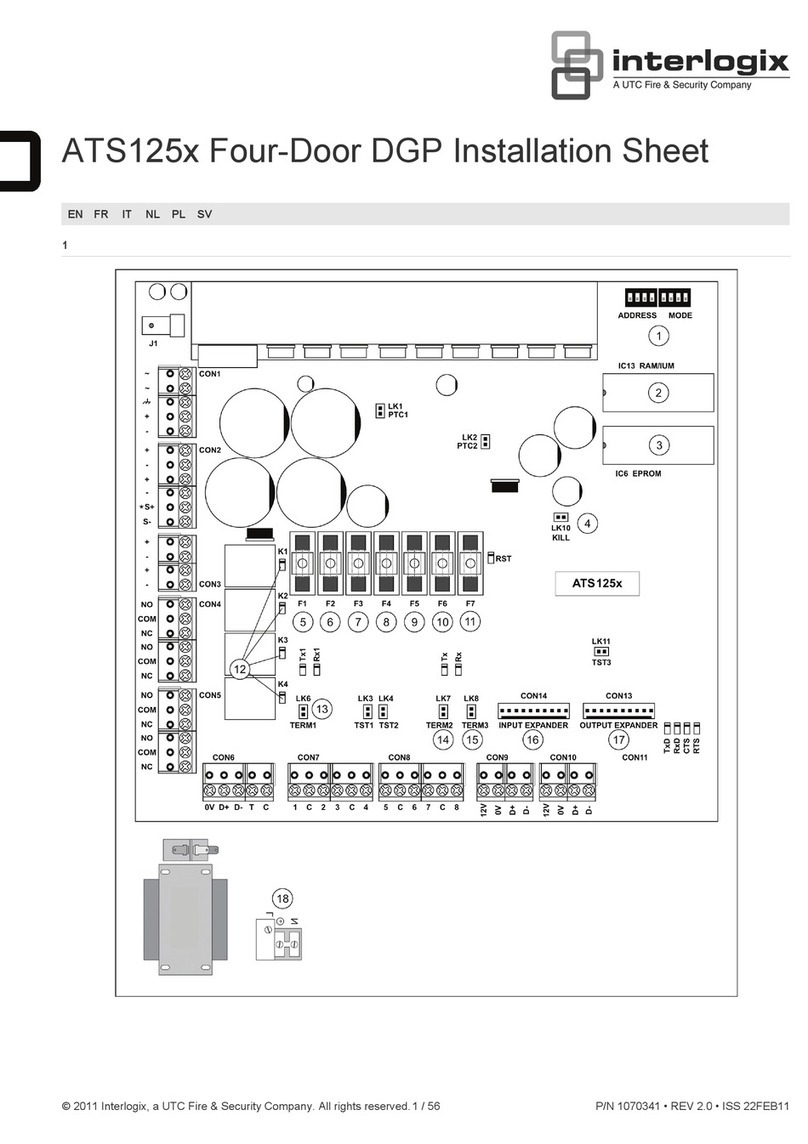
UTC Fire and Security
UTC Fire and Security Interlogix ATS125 Series Assembly instructions
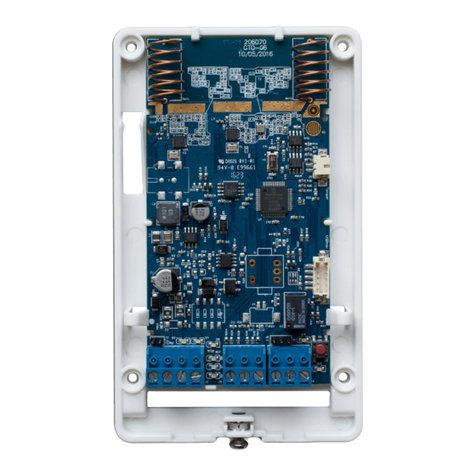
UTC Fire and Security
UTC Fire and Security Interlogix ATS1236 Assembly instructions
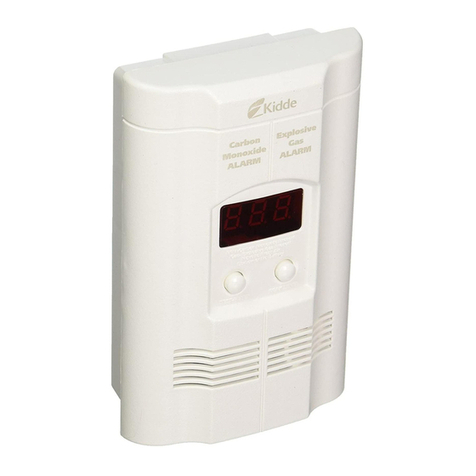
UTC Fire and Security
UTC Fire and Security Kidde KN-COEG-3 User manual

UTC Fire and Security
UTC Fire and Security Interlogix ATS1235 Assembly instructions
Popular Security System manuals by other brands

Smanos
Smanos W120 instruction manual
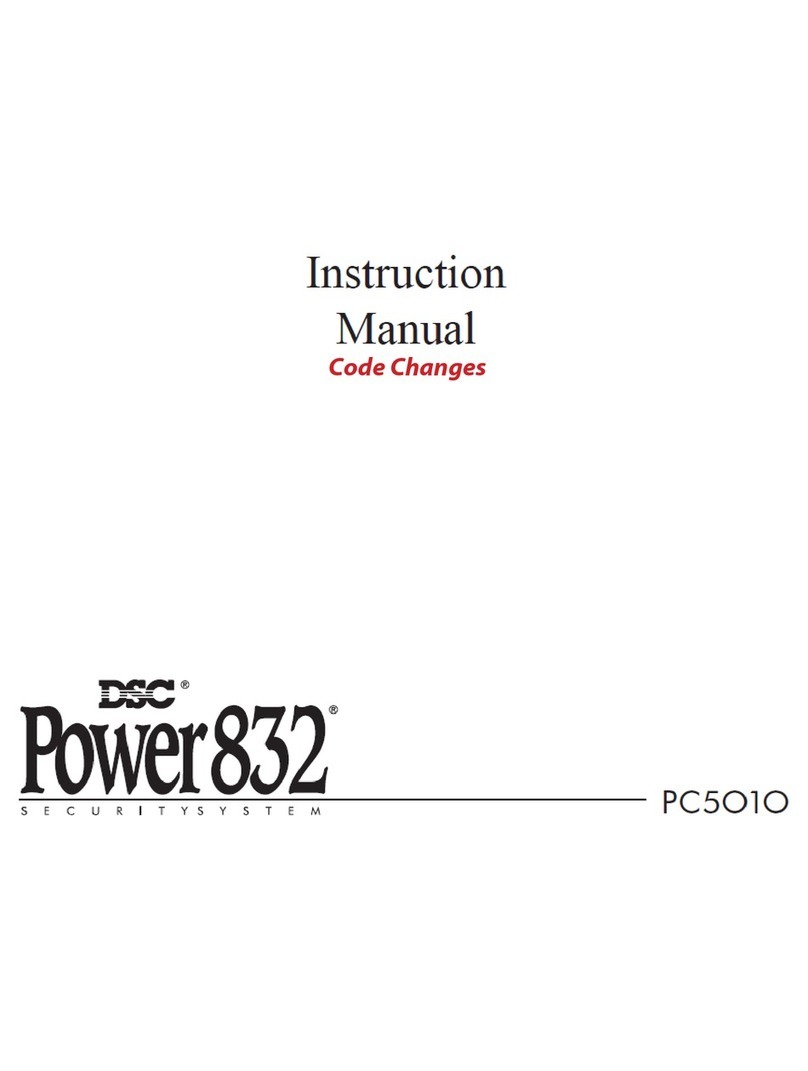
DSC
DSC Power 832 PC5010 instruction manual
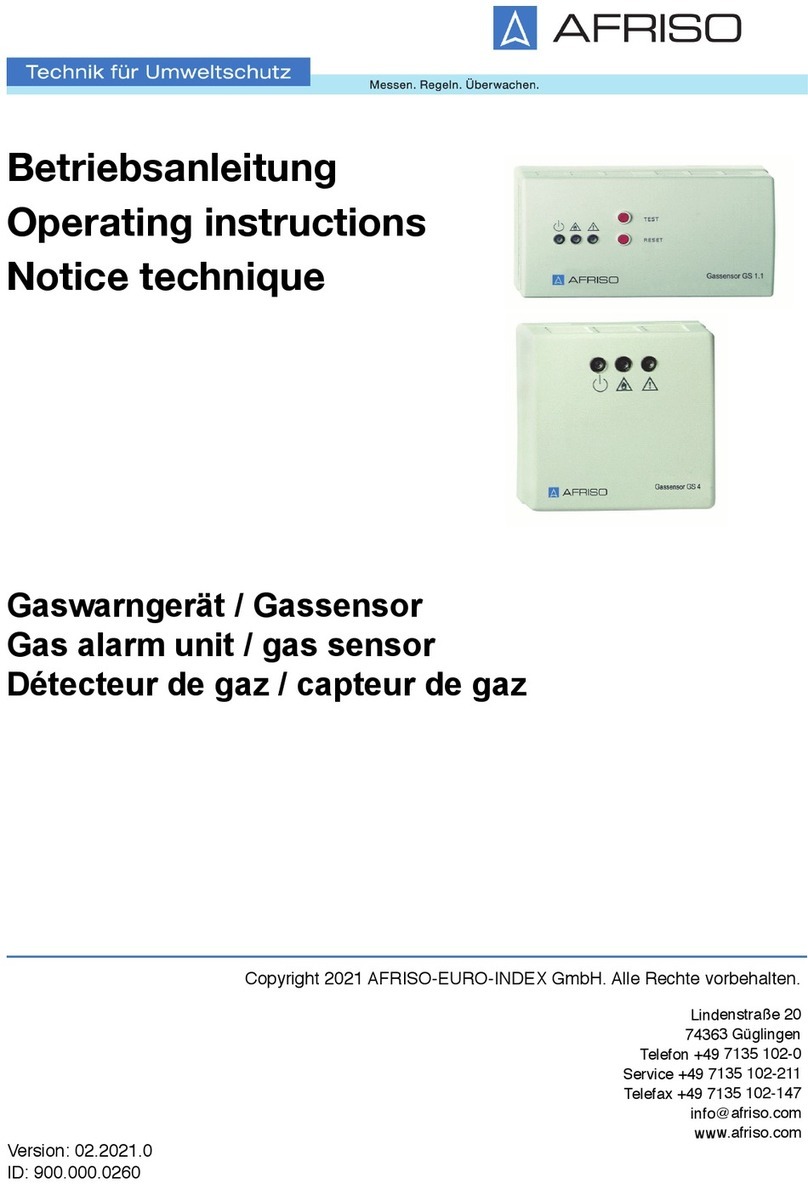
AFRISO
AFRISO GS 1.1 operating instructions

Audiovox
Audiovox PRO-9642a Pursuit Series owner's manual
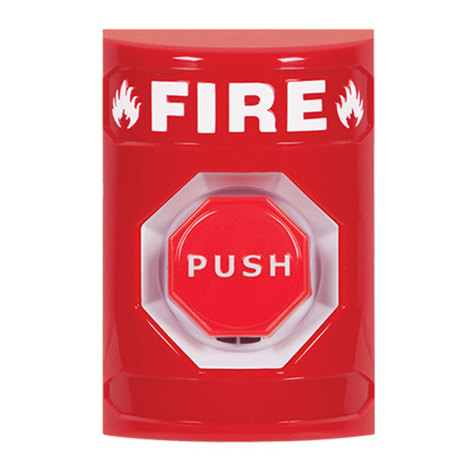
STI
STI Stopper Station Series manual
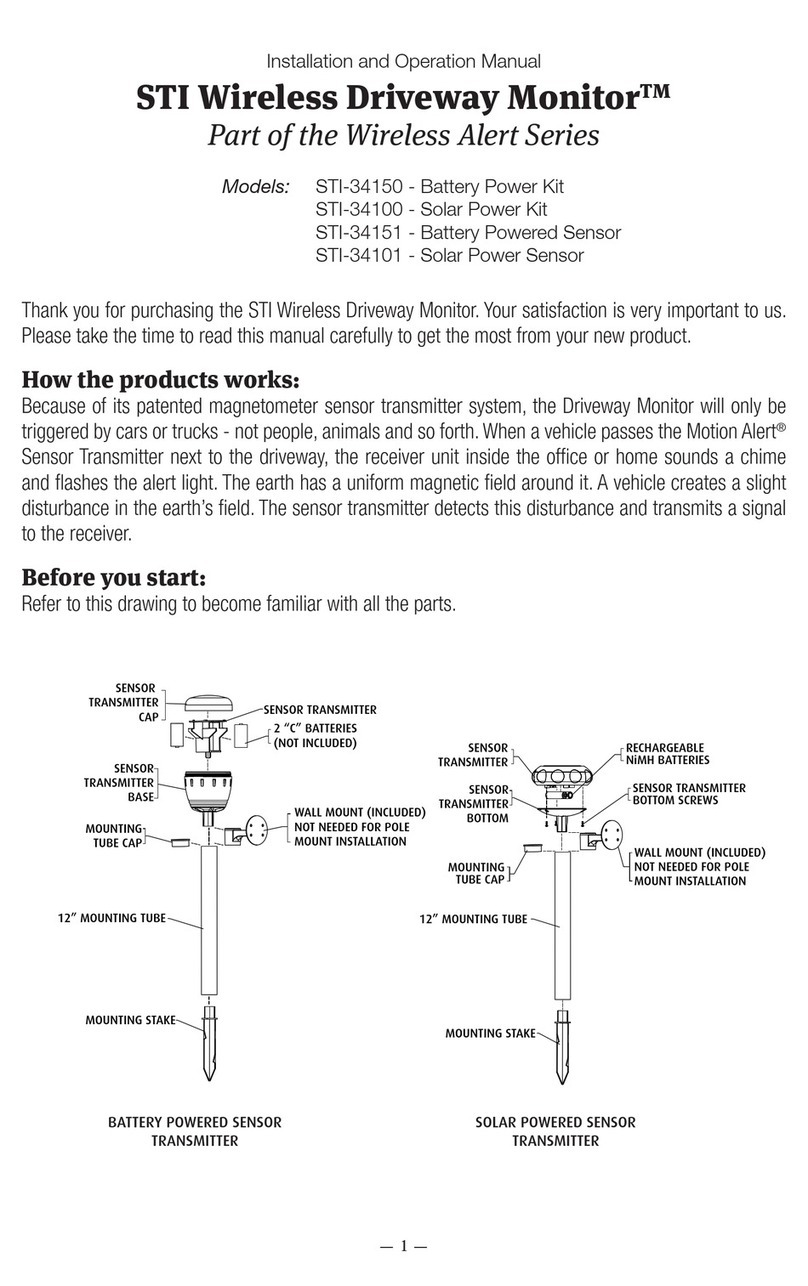
Safety Technology International
Safety Technology International STI-34150 Installation and operation manual
